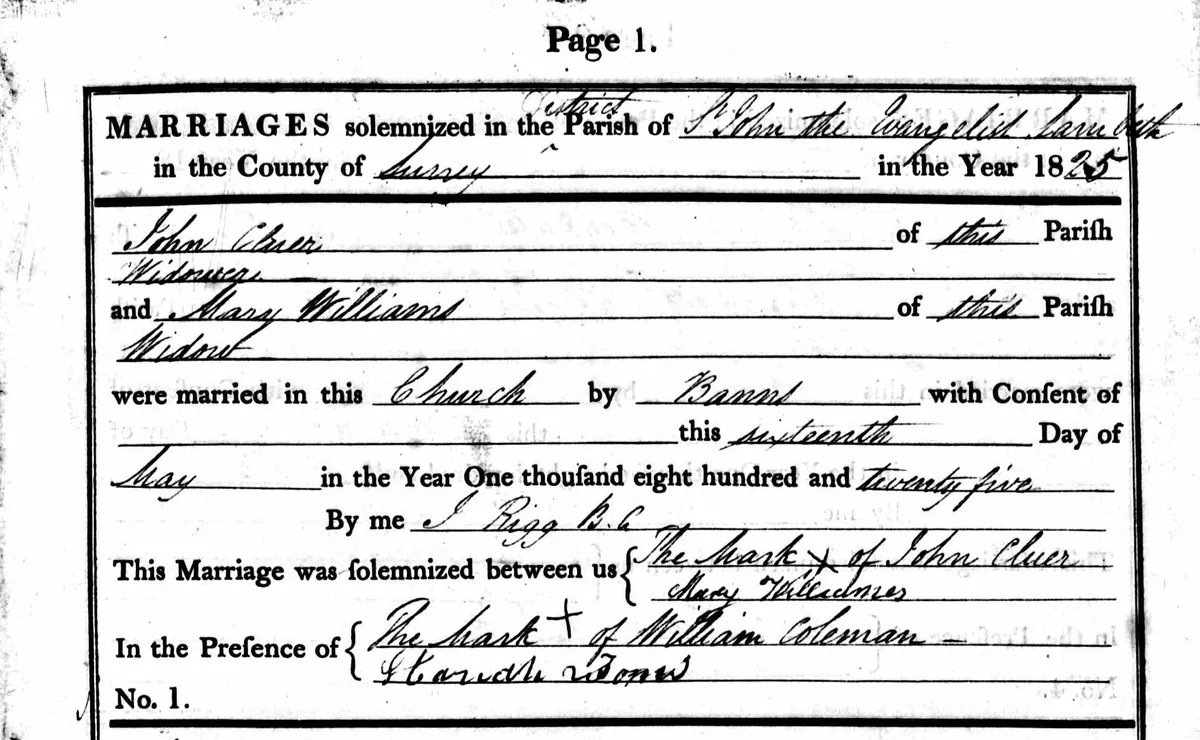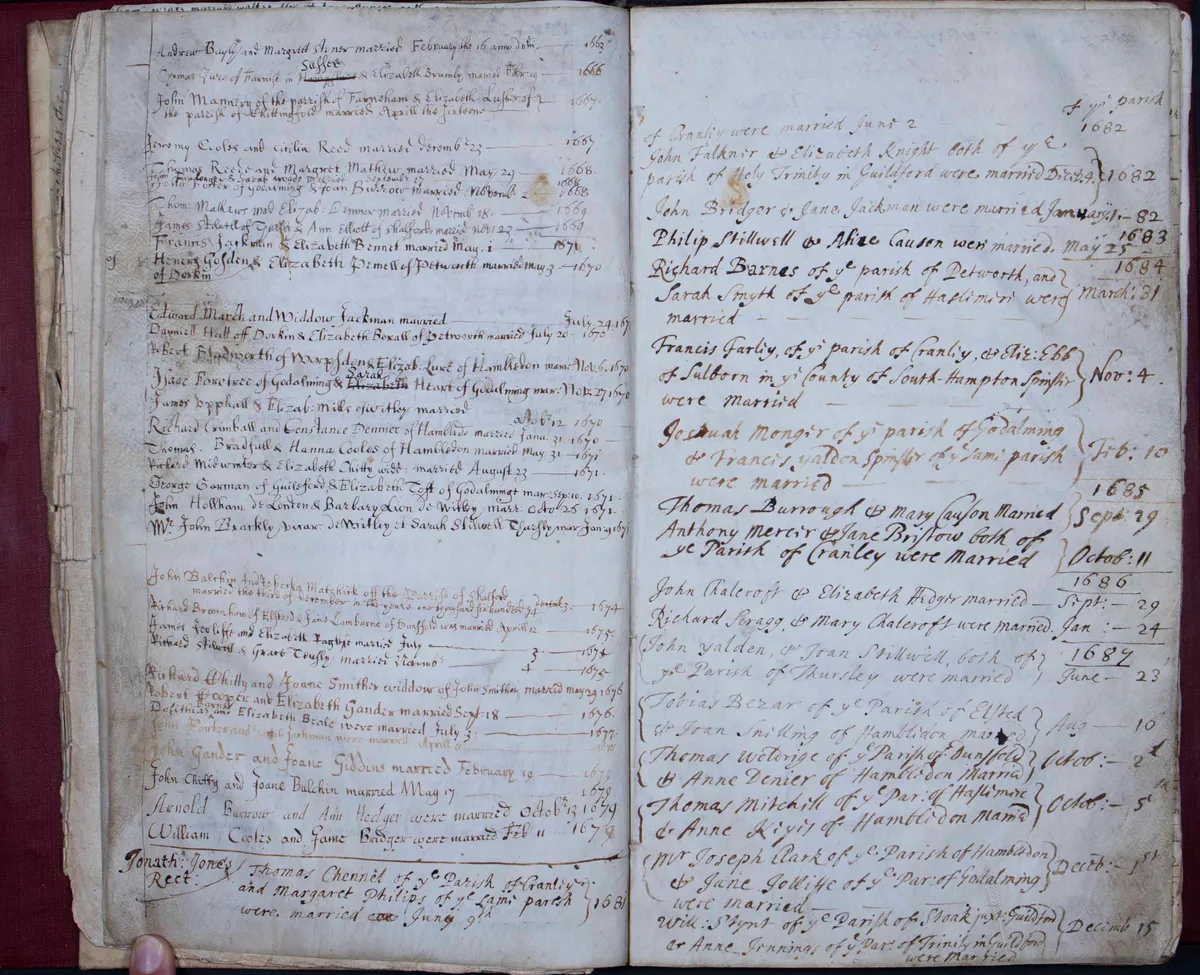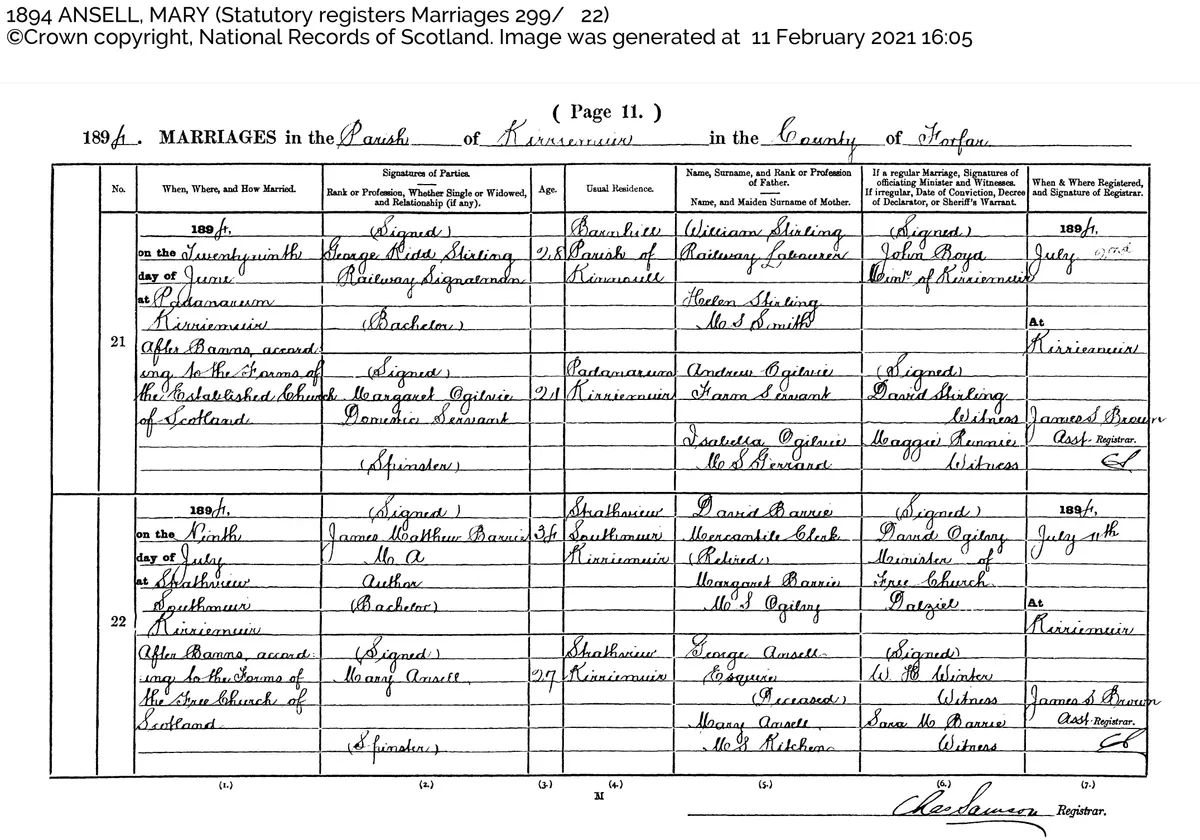Finding your ancestor’s marriage is a key part of tracing their life history. It confirms where they were living at that point in their life and sometimes what their profession was, and reveals the name of their spouse and sometimes parents.
Find out about marriage certificates and how to order them with our handy guide
The best source for finding a marriage record, especially before the introduction of civil registration is parish marriage registers. Since 1538 Church of England churches have kept parish registers recording every baptism, marriage and burial in the church. Until the early 19th century the vast majority of marriages were recorded in an Anglican church, even if the couple weren’t Protestants; the exception is the brief period in the middle of the 17th century when Cromwell’s Commonwealth held sway (1649–1660).
In Scotland, marriage registers are available in similar records known as Old Parish Registers (OPRs) but survival rates are more patchy than for England and Wales with the earliest Church of Scotland registers surviving from the 1550s.
Where to find marriage registers in the UK
The likelihood of a marriage register having survived and (crucially) being discoverable improved as time went on. Free websites such as FamilySearch and subscription sites such as Ancestry or Findmypast are the easiest places to start searching for marriage registers if you already have a name to look for. You can also see what marriage registers have survived for any given parish, where they are held, and whether or not they have been transcribed at GENUKI.
For researchers wanting to find marriage registers in Scottish OPRs it is fairly easy because there are only about 3,500 surviving registers and they have all been digitised and are available to search in one place on ScotlandsPeople for a fee.
However, although many marriage registers for the 10,000 or so parishes in England and Wales are available online, the process of digitisation is not complete. County record offices and archives are today the most likely custodians of original marriage registers, which can generally only be viewed on microfiche or microfilm. Family history societies are also an excellent resource, with many of them holding indexes of marriage registers on CD.

Sadly, relatively few marriage registers survive from the 16th century. However, from 1598 parishes were required to send a copy of their registers to the diocese. Such Bishops’ Transcripts are sometimes the only surviving record of a marriage if the original has been lost. Again, GENUKI is a useful resource for discovering if these marriage registers exist and, if so, where.
How do marriage registers change over time?
Early marriage registers tend to be sparse, usually just recording the names of the couple and the date. Before the middle of the 18th century, marriages were generally entered into the same register book as a parish’s baptisms and burials, possibly some time after the marriage had taken place, and unfortunately it is clear that some marriages were inadvertently omitted.

However, in 1754 a law came into force in England and Wales requiring parish churches to record the calling of banns and the celebrating of marriages in their registers in a specific way. From this point on, genealogists can generally expect to find details of not only the names of the couple, but their parishes, whether they married by banns or by licence, who married them, and the names of two witnesses in the marriage registers. If the bride or groom was underage, the marriage register should also record that the consent of a parent or guardian had been given.
From 1837 on, marriage registers are far more complete. In that year legislation made it possible for the first time to marry in a nonconformist religious ceremony (such as Roman Catholic, Methodist or Baptist), or in a civil marriage in a register office. Copies of civil marriage records can be purchased from the General Register Office (GRO) for £14, or £11 if you supply the index reference for them. If your ancestor married in a church though, it is worth checking to see if the church register has been digitised as it may be possible to see your ancestors' marriage details (including original signatures) as part of a subscription package. The information will be the same as can be obtained with an official certificate from the GRO.
In Scotland, civil registration didn't start until 1855. Again, as with OPRs, these records are available from ScotlandsPeople. Unlike for England and Wales, digital copies of marriage records can be ordered and downloaded immediately. Those researching Scottish ancestors are doubly lucky because not only is a Scottish marriage record cheaper, but it contains more information than English and Welsh marriage certificates. Most importantly it includes the name and maiden surname of the mother of both parties.

What are clandestine marriage registers?
Before 1754, when legislation was introduced to better regulate marriages, some couples married in clandestine marriage ceremonies, which took place away from the couple’s home parish and without formalities such as reading the banns or applying for a licence. A common example of these was ‘Fleet marriages’, which took place in the vicinity of London’s Fleet Prison. Surviving registers of Fleet marriages are held at The National Archives, and it is also possible to search them by name on subscription websites such as Findmypast, Ancestry and TheGenealogist.
What are Gretna Green marriage registers?
From the 1780s, when road improvements made it possible to elope to Scotland for a hasty marriage, through to 1856, when Scottish law introduced new residence requirements for marriage, thousands of English couples who wanted to marry without the approval of their parents were married in the Scottish border villages of Coldstream, Lamberton Toll and, most famously, Gretna Green. Some of the registers of these marriages have been digitised and are searchable on subscription websites.
What are Phillimore marriage registers?
Phillimore marriage registers are a series of copies of historic marriage registers published in the late 19th and early 20th centuries by W. P. Phillimore. 241 volumes of Phillimore marriage registers are available to search on Findmypast, and you can buy discs of this data from S&N Genealogy.
Other ways of finding marriage records
Where marriage registers are simply missing, check with county record offices to see if any settlement examinations survive. These frequently provide a mini biography of individuals, including details of where they were born and married. Also, newspapers began to be published in greater numbers from the late 18th century onwards, and the local and national press may contain a direct record of a marriage or an indirect reference to a person’s spouse. And, for those whose ancestors committed bigamy, newspaper reports of trials at the county assizes provide rich insights, as do accounts on Old Bailey Online.








